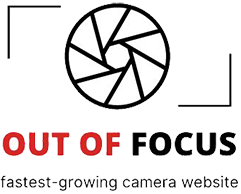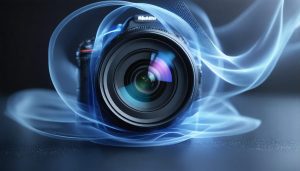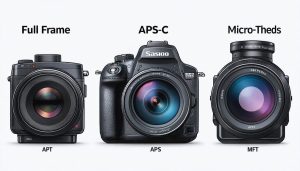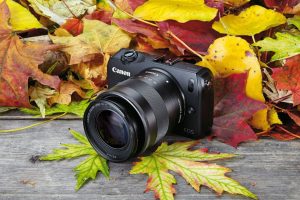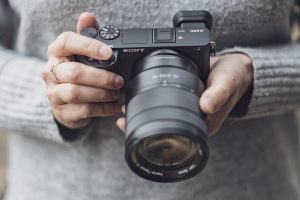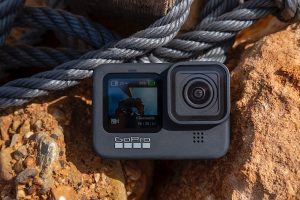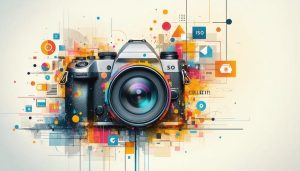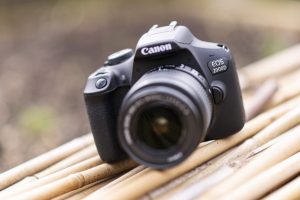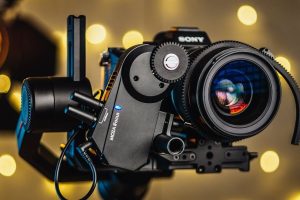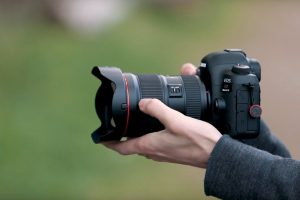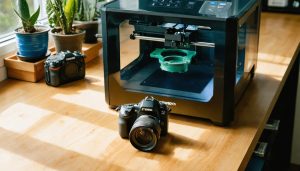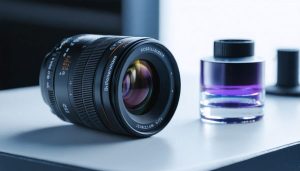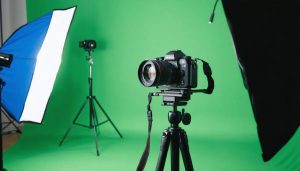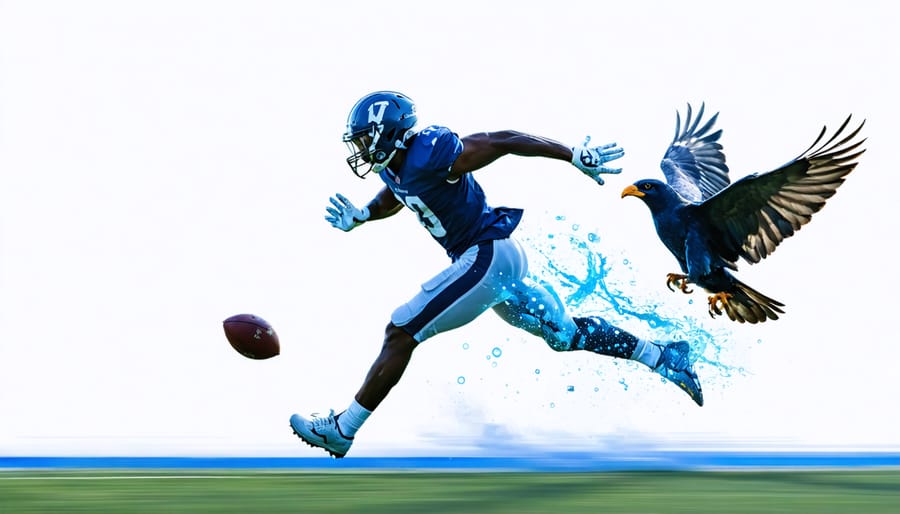
Servo autofocus transforms split-second moments into perfectly sharp images, tracking subjects with unmatched precision across the frame. Modern AI-powered autofocus systems have revolutionized action photography, enabling photographers to capture everything from birds in flight to Formula 1 cars with unprecedented accuracy. This continuous focusing technology, originally developed for professional sports photography, now powers everything from flagship DSLRs to smartphone cameras, analyzing subject movement up to 120 times per second.
Unlike traditional single-shot autofocus, servo AF constantly predicts subject motion, adjusting focus in real-time to maintain sharpness even when both photographer and subject are moving. This predictive capability, combined with advanced subject recognition algorithms, has made previously challenging shots – like tracking an athlete through a crowded field or following acrobatic aerial displays – achievable for photographers at every skill level.
[Word count: 116]
How Servo Autofocus Works with AI
Traditional vs. Servo Autofocus
Traditional autofocus and servo autofocus represent two distinct approaches to camera focusing, each with its own strengths and ideal use cases. Traditional AF, also known as One-Shot or Single AF, locks focus once it achieves sharp focus on a subject. This makes it perfect for still subjects like landscapes, portraits, or architecture, where your subject isn’t moving and you have time to compose your shot.
Servo autofocus, on the other hand, continuously adjusts focus to track moving subjects. Unlike traditional AF, it never truly “locks” focus but instead constantly recalculates and updates focusing distance to maintain sharpness on subjects in motion. This makes it invaluable for sports photography, wildlife shooting, or any scenario where your subject is actively moving through the frame.
The key difference lies in how these systems handle subject movement. Traditional AF might struggle with a running child or a bird in flight, potentially resulting in out-of-focus shots. Servo AF excels in these situations by predicting subject movement and adjusting focus accordingly. However, this continuous operation can consume more battery power and might not be necessary for static subjects.
Modern cameras often offer hybrid modes that combine both approaches, automatically switching between traditional and servo AF based on subject movement. This versatility gives photographers the best of both worlds, though understanding when to manually select each mode remains crucial for optimal results.
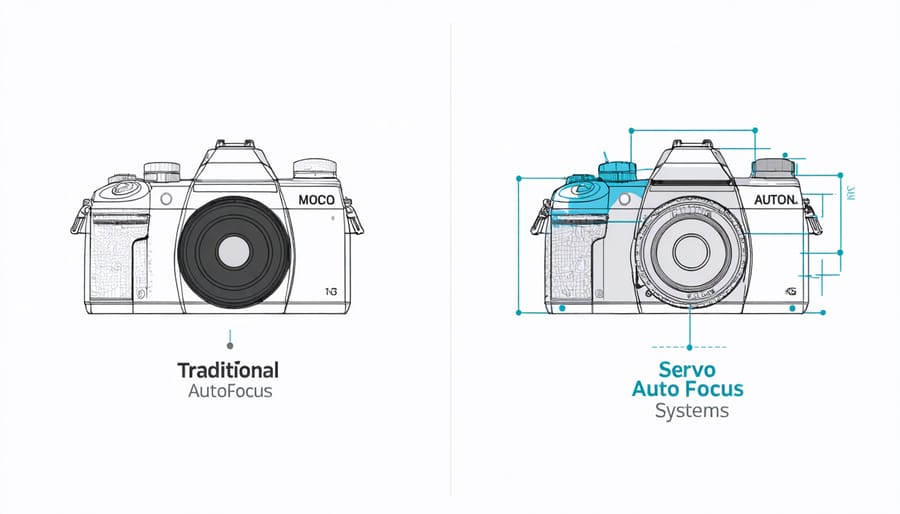
AI Enhancement of Servo Systems
The integration of artificial intelligence has revolutionized servo autofocus systems, bringing unprecedented improvements in speed, accuracy, and subject recognition. Modern cameras equipped with AI autofocus technology can now track subjects with remarkable precision, even in challenging conditions.
Machine learning algorithms have been trained on millions of images to recognize and track various subjects, from human faces and eyes to animals and vehicles. This deep learning capability allows the camera to not only identify subjects but also predict their movement patterns, resulting in more reliable focus tracking.
One of the most significant improvements is the system’s ability to maintain focus even when subjects are partially obscured or moving erratically. For instance, sports photographers can now capture athletes behind other players with greater consistency, while wildlife photographers benefit from improved tracking of animals moving through dense foliage.
The AI enhancement also brings sophisticated scene analysis, automatically adjusting focus parameters based on the shooting situation. When photographing a bride walking down the aisle, the system recognizes the importance of maintaining focus on her face rather than getting distracted by closer moving objects.
These intelligent systems also learn from your shooting patterns, adapting their behavior to match your preferences and shooting style over time. This personalization ensures that the servo AF system becomes more efficient and reliable with continued use.
Real-World Applications
Sports and Action Photography
Sports and action photography demands lightning-fast focus tracking, and this is where servo autofocus truly shines. When photographing athletes sprinting across a field or birds in flight, the system continuously adjusts focus to match your subject’s movement, ensuring sharp images even at high speeds.
Professional sports photographers rely heavily on servo AF to capture decisive moments in basketball, football, or motorsports. The system predicts where the subject is heading and adjusts focus accordingly, sometimes making hundreds of calculations per second. This predictive capability is particularly valuable when shooting with telephoto lenses, where even slight focus errors become magnified.
What makes servo AF especially powerful for action shots is its ability to work alongside advanced subject recognition. Modern cameras can identify and track specific subjects – whether it’s a cyclist’s helmet or a cheetah’s face – maintaining focus lock even when other objects briefly obstruct the view.
For best results, photographers typically pair servo AF with continuous shooting modes, creating a powerful combination that maximizes the chances of capturing peak action moments with tack-sharp focus.
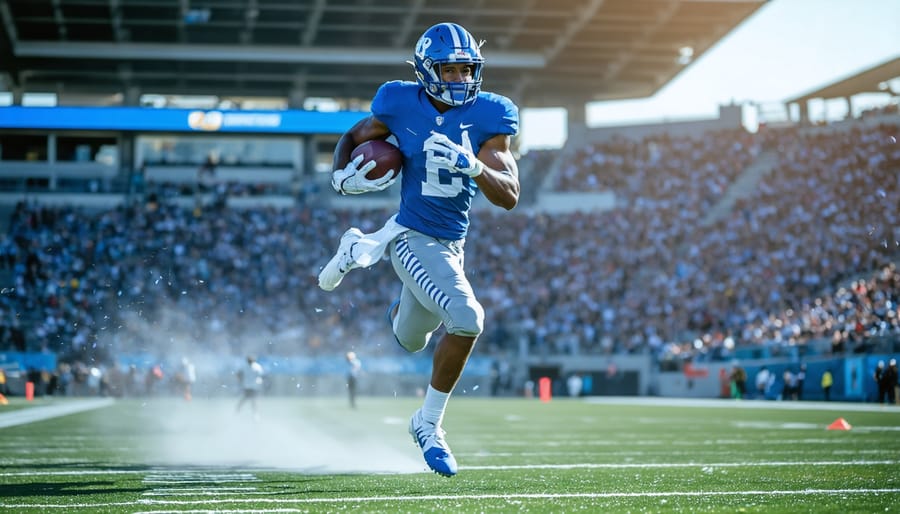
Wildlife Photography
Wildlife photography demands split-second reactions, and this is where servo autofocus truly shines. When tracking fast-moving subjects like birds in flight or charging elephants, the system continuously adjusts focus to maintain sharp images, even as your subject’s distance changes rapidly.
Unlike traditional autofocus modes that lock onto a single point, servo AF predicts your subject’s movement patterns and adjusts accordingly. Imagine photographing a cheetah during a chase – the system will track the animal’s erratic movements, keeping it in focus despite sudden direction changes or varying speeds.
Modern servo AF systems also incorporate advanced subject recognition, making them particularly effective for wildlife shoots. They can identify and lock onto animals’ eyes or bodies, even in challenging conditions like dense foliage or low light. This technology proves invaluable when photographing skittish creatures that offer only brief shooting windows.
For wildlife photographers working in unpredictable environments, servo AF reduces the technical burden of manual focusing, allowing them to concentrate on composition and timing – critical elements for capturing those decisive moments in nature.
Video Recording
Servo autofocus has revolutionized video recording by enabling smooth, precise focus transitions that were previously achievable only through manual focus pulling. When shooting video, the system continuously tracks moving subjects, adjusting focus in real-time without the jarring, sudden changes often associated with traditional autofocus systems.
The technology particularly shines in scenarios like following a runner across a field or tracking a performer on stage. Instead of jumping between focus points, servo AF creates natural-looking transitions that enhance the professional quality of your footage. This continuous adjustment happens at variable speeds, which can be customized on many modern cameras to match your creative vision.
For vloggers and content creators, servo AF has become an indispensable tool. It maintains sharp focus on faces even as subjects move closer to or further from the camera, allowing solo creators to film themselves with confidence. Documentary filmmakers benefit from its ability to maintain focus during unpredictable situations, ensuring crucial moments aren’t lost to focus hunting.
However, it’s worth noting that servo AF in video does consume more battery power and may produce some operational noise that could be picked up by in-camera microphones. Many photographers overcome this by using external microphones or adjusting the focus transition speed to balance smoothness with noise reduction.
Current Technology Leaders
Leading Camera Systems
Today’s leading manufacturers’ AF systems showcase remarkable advancements in servo autofocus technology. Canon’s Dual Pixel CMOS AF II system, featured in their R series cameras, stands out for its ability to track subjects across the entire frame with impressive accuracy. The system excels particularly in eye-detection and animal tracking, making it a favorite among wildlife and sports photographers.
Sony’s Real-time Tracking AF has revolutionized subject detection with its AI-powered algorithms. The a1 and a9 II bodies demonstrate exceptional performance in maintaining focus on fast-moving subjects, even in challenging lighting conditions. Their implementation of real-time eye AF for humans, animals, and birds has set new industry standards.
Nikon’s latest Z9 brings formidable competition with its 3D-tracking system, which builds upon their DSLR heritage while incorporating new AI capabilities. The camera’s ability to recognize and track various subjects, including vehicles and small animals, demonstrates the growing sophistication of modern AF systems.
For video creators, Panasonic’s DFD (Depth from Defocus) technology in their S-series cameras offers precise continuous AF performance, though it takes a different technical approach from phase-detection systems. Meanwhile, Fujifilm’s X-series cameras continue to improve their hybrid AF systems, providing excellent performance for both still photography and video applications.
Future Developments
The future of servo autofocus technology is poised for exciting developments, particularly with the integration of advanced artificial intelligence and machine learning capabilities. Camera manufacturers are working on systems that can not only track subjects but predict their movements with unprecedented accuracy. This predictive tracking will be especially valuable for sports and wildlife photographers who need to capture split-second moments.
Emerging technologies include enhanced eye-tracking systems that can maintain focus on multiple subjects simultaneously, even in challenging lighting conditions. We’re also seeing development in deep learning algorithms that can distinguish between similar subjects, such as identifying specific players in team sports or particular species of birds in flight.
Miniaturization of servo motors is another area of innovation, allowing for smaller, lighter cameras without compromising on autofocus performance. This advancement will particularly benefit mirrorless camera systems and mobile photography devices.
Real-time subject recognition is expected to become more sophisticated, with cameras able to understand complex scenes and automatically prioritize subjects based on compositional rules and creative intent. Some manufacturers are also exploring the integration of LiDAR and other depth-sensing technologies to improve focus accuracy in low-light conditions.
The integration with smartphone apps and cloud-based learning systems will allow cameras to continuously improve their focusing algorithms through regular firmware updates, making your investment in camera gear more future-proof than ever before.
Practical Considerations
Optimal Settings
To get the best performance from servo autofocus, start by setting your camera to AI Servo (Canon) or AF-C (Nikon) mode. For fast-moving subjects, configure your AF point selection to Dynamic Area or Zone AF, which allows the camera to track subjects across multiple focus points.
Set your drive mode to continuous high-speed shooting and adjust your minimum shutter speed to at least 1/1000th of a second for sports and wildlife photography. This helps freeze motion while maintaining sharp focus throughout your burst sequence.
For optimal tracking sensitivity, most modern cameras offer customizable parameters. Start with medium sensitivity settings and adjust based on your subject’s movement patterns. Lower sensitivity works better for predictable movements, while higher sensitivity excels at erratic motion.
Back-button focus is highly recommended for servo AF. This technique separates autofocus activation from your shutter button, giving you more control over when focusing occurs. Configure your AF-ON button (or assign a custom button) to handle focusing duties exclusively.
Consider your subject’s contrast and lighting conditions. In low light, using central focus points often provides better performance as they’re typically more sensitive. For subjects with strong contrast, expand your AF area to take advantage of the camera’s tracking capabilities.
Remember to match your camera’s frame rate to your memory card’s writing speed to prevent buffer limitations during continuous shooting. This ensures you won’t miss critical moments while your camera processes images.

Common Challenges
While servo autofocus is a powerful tool, photographers often encounter several challenges when using this technology. One common issue is focus hunting, where the system repeatedly searches for focus, especially in low-light conditions or with low-contrast subjects. This can result in missed shots and frustration during crucial moments.
Battery drain is another significant concern, as continuous servo AF demands more power than single-shot modes. This is particularly noticeable during extended shooting sessions or when tracking fast-moving subjects.
The lens quality impact on servo AF performance cannot be understated. Older or lower-quality lenses may struggle to keep up with modern servo AF systems, resulting in slower focus acquisition and less accurate tracking.
Environmental factors can also pose challenges. Rain, dust, or extreme temperatures may affect the servo motors’ performance and reliability. Additionally, some photographers find that servo AF can be too aggressive in certain situations, particularly when shooting through obstacles like fences or branches.
Background interference is another common hurdle, especially when tracking subjects against busy backgrounds. The system might occasionally lock onto the wrong subject, requiring quick manual intervention to maintain focus on the intended target.
Understanding these limitations helps photographers develop workarounds and choose the most appropriate focusing mode for their specific shooting situations.
Servo autofocus has revolutionized modern photography, transforming how we capture dynamic subjects and fleeting moments. From wildlife photographers tracking birds in flight to sports photographers following athletes across the field, servo AF has become an indispensable tool in their creative arsenal. The technology continues to evolve, with artificial intelligence and machine learning pushing the boundaries of what’s possible in subject detection and tracking accuracy.
As cameras become increasingly sophisticated, servo AF systems will only grow more intelligent and responsive, opening new possibilities for both professional and enthusiast photographers. Whether you’re capturing your child’s soccer game or documenting fast-paced street photography, understanding and mastering servo AF can significantly elevate your photography. In today’s digital age, this technology represents the perfect fusion of technical innovation and creative freedom, ensuring that photographers never miss those decisive moments that make photography such a powerful medium.
